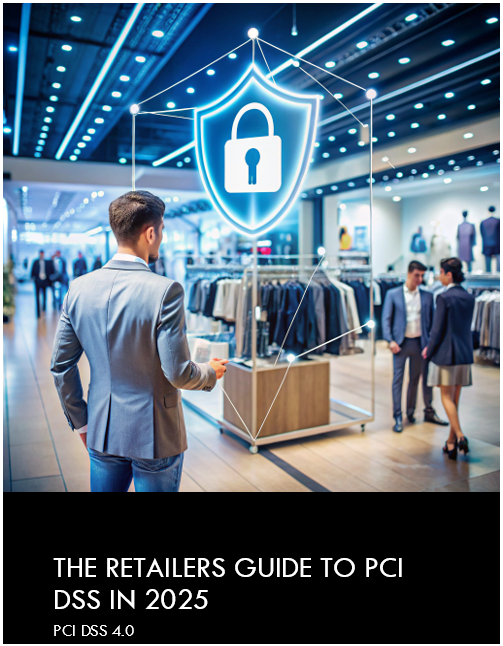Introduction: Why Organizational Change Management Matters in Cybersecurity
Organizational Change Management (OCM) plays a critical role in achieving robust cybersecurity outcomes. Cybersecurity is not solely a technical undertaking. It depends heavily on employee behavior, shared responsibility, and a culture that embraces change. When organizations introduce new security measures, the impact goes far beyond system updates and software patches. These measures affect daily work practices, habits, and the overall work environment. Therefore, managing the change properly can be the difference between a secure transformation and a failure that exposes the company to significant risks.
This article explains the importance of OCM for cybersecurity projects and provides a step-by-step exploration of strategies that ensure smooth transitions. We detail practical frameworks such as the ADKAR model, offer proven techniques to address resistance, and outline methods to engage all stakeholders. In addition, we look into real-world case studies that reinforce the necessity of managing human factors in cybersecurity initiatives.
What Is the Human Factor in Cybersecurity?
People are at the core of cybersecurity. Often, security failures occur not because the technological controls are weak but because employees struggle to adjust to new protocols. When organizations introduce security updates, various teams might feel that these changes interrupt their established routines.
Understanding the human element involves recognizing:
- Emotional responses to change
- Communication gaps regarding new risks and procedures
- Resistance resulting from fear of the unfamiliar
- Operational disruptions that affect productivity
By acknowledging these challenges, companies can adopt a more empathetic approach to change management. When employees understand the rationale behind cybersecurity measures and see how these practices protect both them and the organization, they are more likely to adopt new protocols willingly.
In this context, clear communication becomes essential. Leaders must articulate why changes are necessary, what benefits they bring, and how risks are mitigated. By doing so, organizations build trust and foster an environment that embraces continuous learning and adaptation.
How Does the ADKAR Model Guide Change?
The ADKAR model offers a clear roadmap for managing change. This proven framework is built on five key elements that help organizations steer through transitions while maintaining employee morale and productivity. The model acts as a checklist to ensure no step is overlooked during the change process.
What Is Awareness?
Awareness involves communicating the risks and reasons behind any change. It helps employees understand why current practices may not be sufficient in combating modern threats. Companies can illustrate issues by highlighting incidents such as USB-based malware or publicized data breaches. When employees grasp the potential risks, the desire to support new measures grows stronger.
There are several practical ways to build awareness:
- Hold informational seminars focused on current threat landscapes.
- Distribute data-driven reports that outline cybersecurity vulnerabilities.
- Share case studies of organizations that suffered due to outdated practices.
What Is Desire?
The second step is fostering a genuine desire for change among employees. When personnel view new security measures as adding value rather than as barriers to productivity, resistance decreases. Leaders should position cybersecurity as an enabler rather than a roadblock to business efficiency.
Strategies to build desire include:
- Highlighting success stories where improved security led to business advantages.
- Emphasizing the role of robust cybersecurity in maintaining client trust.
- Relating changes directly to personal and professional benefits.
What Does Knowledge Entail?
After generating awareness and pride, it is crucial to impart the necessary knowledge. Employees must learn about the tools, techniques, and processes associated with new security measures. Training sessions should focus on everyday applications such as secure file sharing and safe email practices.
Effective knowledge transfer happens through:
- Hands-on training workshops
- Interactive webinars and Q&A sessions
- Provision of simple, clear user guides
Making the learning process interactive encourages questions and promotes a clearer understanding of cybersecurity threats and responses.
How Is Ability Developed?
Knowledge alone is not enough. Employees must apply what they have learned. Developing the ability to implement new techniques is achieved through practical experience and regular training exercises. For example, companies often use phishing simulations to test and improve employee responses to social engineering attacks.
Methods that increase ability include:
- Simulated cyberattack drills
- Regular workshops with practical demonstrations
- Mentorship programs where experienced personnel guide others
How Do You Reinforce Change?
Reinforcement is the final piece of the ADKAR model. Once changes are implemented, continual support is needed to maintain momentum. Organizations should monitor how the new measures function and adjust policies accordingly. Rewards and recognition for compliant behavior help cement change as a new norm.
Reinforcement strategies include:
- Establishing feedback loops to monitor compliance
- Recognizing and rewarding employees who excel in new practices
- Regular policy reviews in response to evolving threats
How Can You Assess and Plan Effective Change?
Effective planning is a cornerstone of successful cybersecurity projects. Before implementing any new measures, organizations must conduct thorough risk assessments and prepare a detailed change management plan. This stage lays a solid foundation for all subsequent actions and helps to build confidence within the organization.
Key steps in assessing and planning change include:
- Risk Assessments: Identify potential security vulnerabilities and evaluate how new measures address these risks.
- Dependency Analysis: Map out how changes affect interconnected systems and applications. This analysis prevents unforeseen disruptions and highlights areas where additional safeguards are required.
- Prioritization of Changes: Not all updates require the same level of urgency. For instance, security patches are high-priority and demand rapid implementation, whereas system updates may follow a more extended timeline.
The following table illustrates a typical change management plan:
| Change Category | Priority | Implementation Timeline |
|---|---|---|
| Security Patch | High | 24 hours for rollout, 72 hours for review |
| System Update | Medium | 1 week for rollout, 2 weeks for review |
This structured approach to change management reduces uncertainty and provides clear timelines for stakeholders. As a result, employees and leadership alike understand what is expected and when to expect it.
What Strategies Enhance Stakeholder Engagement?
Engaging all stakeholders from the outset is essential. Change should not be forced from above with little input from those affected. Instead, leaders can improve outcomes by creating spaces for dialogue, collaboration, and shared decision-making.
Consider these strategies for effective stakeholder engagement:
- Early Involvement: Include business unit leaders and frontline staff when discussing new cybersecurity measures. Early conversations about your plans help tailor solutions to actual needs.
- Joint Workshops: Hold sessions where technical teams and business personnel work together on identifying potential risks and creating countermeasures.
- Feedback Sessions: Establish regular meetings to discuss the performance of new measures. These sessions allow for continuous improvement and help employees feel heard.
- Co-Creation Initiatives: By collaborating with teams that use the systems daily, cybersecurity becomes a shared challenge rather than an imposed mandate.
When stakeholder engagement is genuine, resistance diminishes, and the adoption of new practices becomes more natural. Employees are more inclined to offer insights that can lead to practical improvements, ensuring that security measures serve both business and operational needs.
How Do You Address Employee Resistance?
Employee resistance is a common obstacle in cybersecurity projects. Such resistance often stems from uncertainty, fear of the unknown, or a perception that change disrupts well-established routines. Addressing these concerns proactively is essential to building a resilient security culture.
Leaders can manage resistance through several methods:
- Clear Communication: Articulate the benefits of the change. Explain how security measures protect both personal and corporate interests.
- Trust-Building: Create open channels where employees can voice concerns without fear of reprisal. This transparency helps demystify new protocols.
- Integration into Daily Workflow: Align security controls with existing processes. For example, implement multi-factor authentication in a way that minimizes delays while ensuring robust protection.
- Regular Feedback Loops: Continuously monitor how employees adapt and refine practices based on their experiences. Involving employees in reviewing and adjusting policies reinforces their investment in security goals.
By treating resistance as an opportunity to improve rather than a setback, organizations can convert potential obstacles into a catalyst for lasting improvements. Listening to feedback and adjusting measures accordingly helps build a culture that values both security and efficiency.
What Do Real-World Examples Teach Us?
Real incidents underline the necessity of effective change management. One high-profile example is the Target breach of 2013. This incident, which compromised 40 million records, demonstrated that technical safeguards alone are insufficient when change is poorly managed.
Analyzing the breach reveals several lessons:
- Lack of Awareness: Employees and contractors did not fully comprehend the risks posed by inadequate security training.
- Inadequate Training: Personnel were not adequately prepared to recognize and address emerging threats, leaving the organization vulnerable.
- Deficient Change Communication: The absence of robust communication channels meant critical updates were neither well-conveyed nor acted upon promptly.
A well-implemented OCM strategy would have involved thorough risk assessments, clear communication of emerging threats, and visible commitment from leadership. Had Target applied these practices with rigor, the incident might have been averted




